Picture Books That Teach Kids About Prejudice, Inclusion, and Kindness
This post may contain affiliate links.
(Originally published 11/2018, updated 6/2020.)
My heart is heavy with the recent surge of institutionalized bullying from leaders, wide-spread, systemic racism from police against black Americans, and prejudice against people who are not in the dominant culture including BIPoC (Black, Indigenous, People of Color). Teachers and parents have asked me to share picture books you can use with children ages 2 to 8 to teach about prejudice, racism, anti-racism, acceptance, inclusion, and tolerance.
These picture books aren’t enough. Clearly.
But, you can use them to start conversations with your young children about race, humanity, culture, inclusion, and kindness.
Because only way we can make significant social change is to 1) get educated and educated our children 2) LISTEN and have conversations with each other, particularly if you’re white like I am with BIPoC (Black, Indigenous, People of Color) individuals, and 3) take action.
Being not racist is not enough to make changes. We must be ANTI-racist. This means we must be actively speaking out in words and acting up in actions against racism. (ACTIVISM!)
Reading these anti-racism books with preschoolers and elementary age children will bring up both questions and topics that you can discuss before, during, and after reading.
Look for examples in the books of excluding, judging, and hurt feelings. Ask children where they see stories with solutions to the prejudices. Most of all, just talk.
If we don’t talk about these things, we fail our kids.
If we don’t talk about race, identity, inclusion, and social justice, we raise a generation who won’t do better.
Even more importantly, if we don’t change our actions on a daily basis, nothing will get better.
“Try to be a rainbow in someone else’s cloud.” – Maya Angelou
Picture Books About Prejudice, Inclusion, and Kindness
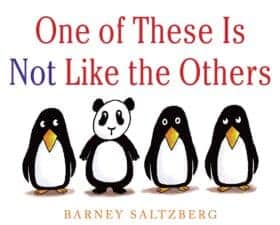
One of These Is Not Like the Others by Barney Saltzberg
ages 2 – 6
Even though one of these is not like the others, that’s just fine with these friends…because it’s how they rock and roll. Cute illustrations show friend groups with one different-looking friend. For example, three pigs and a wolf or three dogs and a cat or three snails and an alien. Saltzberg uses minimal text and illustrations to convey an important message for young children about inclusion, friendships, and diversity. Because we ARE different and it’s okay to talk about it.
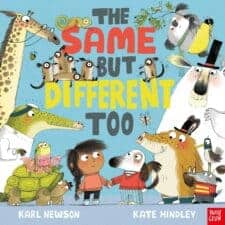
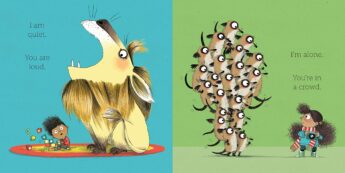
The Same But Different Too by Karl Newson, illustrated by Kate Hindley
ages 2 – 6
A wonderful story for bedtime, classrooms, or anytime that celebrates our similarities and differences featuring playful kids and animals! “I am playful. You are too. I can’t hide as well as you.”
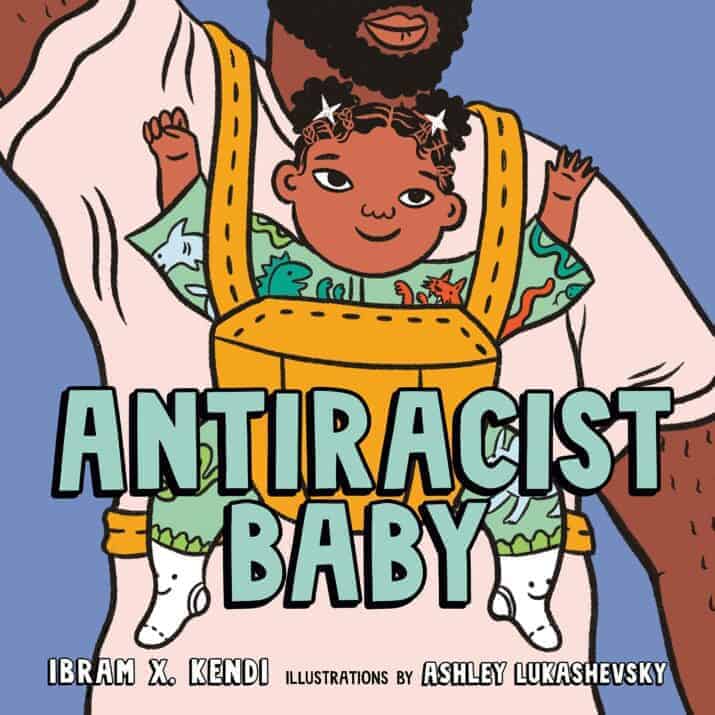
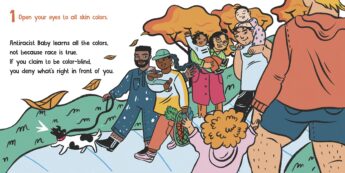
Antiracist Baby Picture Book by Ibram X. Kendi, illustrated by Ashley Lukashevsky
ages 4+
Now a picture book as well as a board book, introduce your children to 9 ways to be antiracist, a person who actively works to recognize and stand against racism. From “1 Open your eyes to all skin colors” to “9 Believe we shall overcome racism,” this book is filled with guiding principals and rhyming kid-friendly explanations plus colorful, playful artwork. “Antiracist Baby is always learning, changing, and growing. Antiracist Baby stays curious about all people and isn’t all-knowing.” Use this important book as a springboard for learning and discussion.
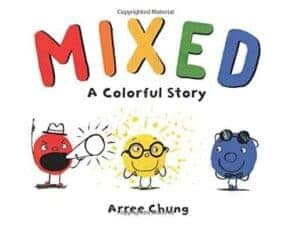
Colors by Arree Chung
#OWNVOICES
ages 4 – 8
Red declares to Yellow and Blue that RED is the best. That’s when these three primary colors separate into distinct groups –groups that don’t mix. But when Yellow and Blue fall in love and have a child, Green, little by little the separation ends and the groups come together and make something beautiful.
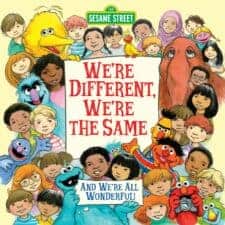
We’re Different, We’re the Same by Bobbi Kates, illustrated by Joe Mathieu
ages 2 – 8
Noses look different but they’re the same, too because they breathe and sniff. Sesame Street characters show kids that no matter how things look on the outside, we’re also the same on the inside. For example, we all have muscles and bones as well as needs and feelings.

Strictly No Elephants by Lisa Mantchev, illustrated by Taeeun Yoo
ages 4 – 8
When the Pet Club won’t permit elephants, the sad boy takes his elephant and leaves. He meets a girl with a skunk and soon, other friends with unusual pets who aren’t allowed in the Pet Club. Together the new friends make an inclusive club for all animals in a wonderful tree house! This one of my favorite books to use for teaching about racism, inclusion, and acceptance because it shows what we can do — not be defeated but take action to make things better.
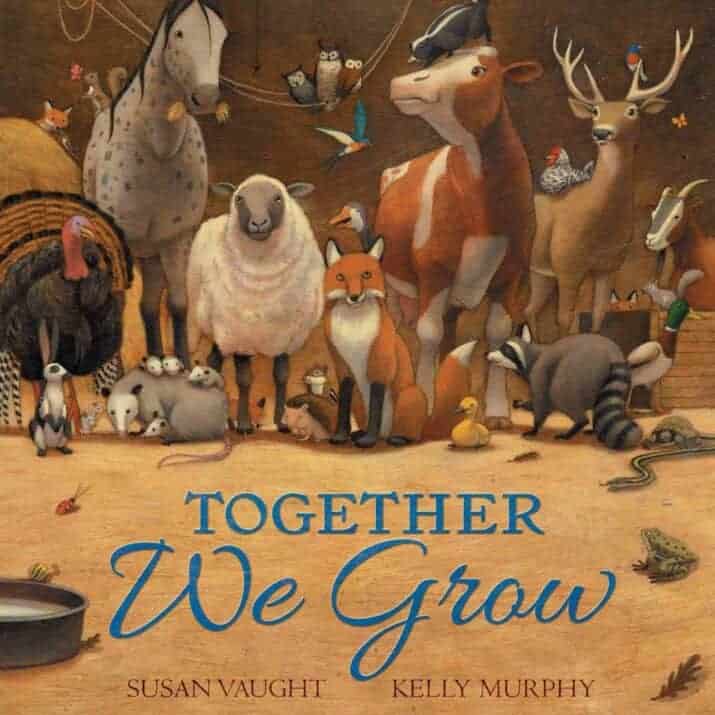
Together We Grow by Susan Vaught, illustrated by Kelly Murphy
ages 4 – 8
Minimal, lyrical text with dynamic illustrations tell the story of the courage to make a difference and include everyone. “Lightning gash! Windy last! Rain and thunder, home asunder.” The barn full of animals won’t let a drenched fox family into the barn. So a yellow duckling leaves the barn to comfort the fox family outside. Soon, the other animals follow the ducklings example. “Learn and show together we grow.” As they all return to the warm, safety of the barn, we see that many different kinds of animals are now welcome to find shelter in the barn. “Flat or long, screech or song. Slow or quick, lumpy and slick…there is room for us all.”
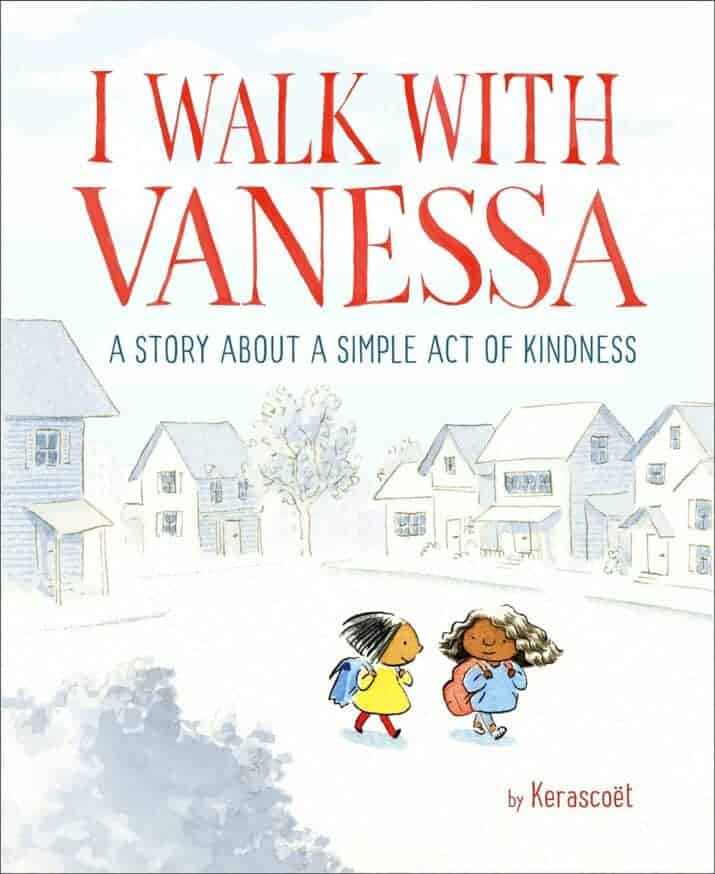
I Walk with Vanessa: A Story About a Simple Act of Kindness by Kerascoët
When a classmate is being bullied, what can you do? This wordless picture book shows that you stand up for your classmate and show your classmate that they are not alone. Actions! The little girl shows kindness and walks home with the lonely, hurting classmate.
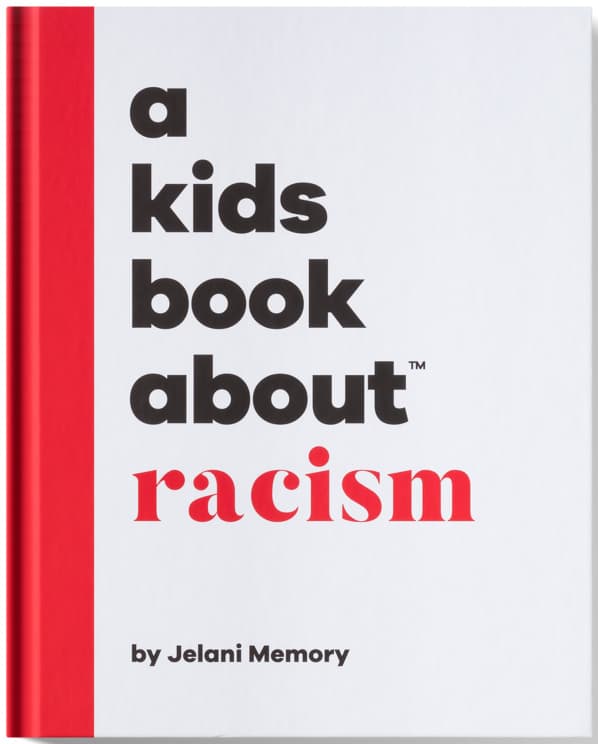
A Kids Book About Racism by Jelani Memory
Memory wrote this book to help start a conversation between grown-ups and kids. “Racism means to hate someone, exclude them, or treat them badly because of their race, or the color of their skin.” Memory introduces himself and shares that racism, big and small, hurts him and happens a lot. It’s the worst kind of mean someone can be, he explains. And that being different is good!

Race Cars by Jenny Devenny, edited by Charnaie Gordon
Two best friends enter a race and discover that the white car is treated differently than the black car who has different rules and even a different track. When the white car realizes what’s happening, he goes back for his best friend and apologizes for not noticing. The back contains discussion points for adults to work through with children. This book will be a helpful teaching tool for bias and racism.
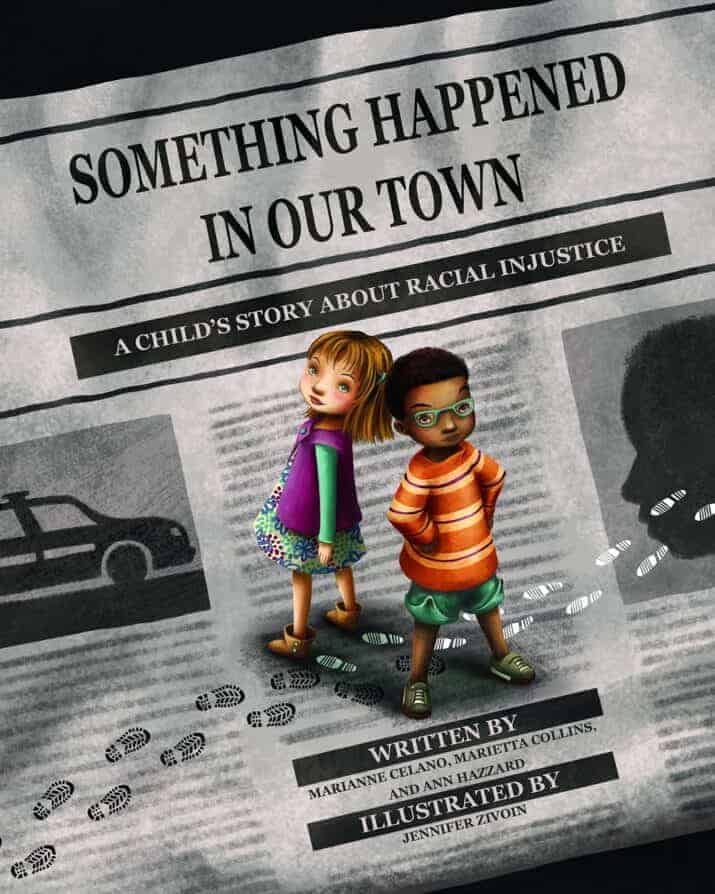
Something Happened in Our Town: A Child’s Story About Racial Injustice by Marianne Celano PhD, Marietta Collins PhD, and Ann Hazzard PhD, illustrated by Jennifer Zivoin
#OWNVOICES
ages 4 – 12
Excellent — this book addresses police violence and racism head on in a way that is developmentally appropriate for children. When a black man is shot by the police, we listen in on conversations that happen in two families: a white family and a black family. The white parents talk with Emma and her sister about the history of racism and label the current situation as an “unfair pattern” of how black people are treated. In the black family’s conversation, Josh asks his dad if the police can go to jail. Josh’s dad talks about how some police make good choices and some don’t. They talk about social justice leaders and how to make changes by using their anger and uniting together. The story ends with a new boy named Omad arriving at school and how the kids apply what they’ve learned from their parents to treat Omad kindly.
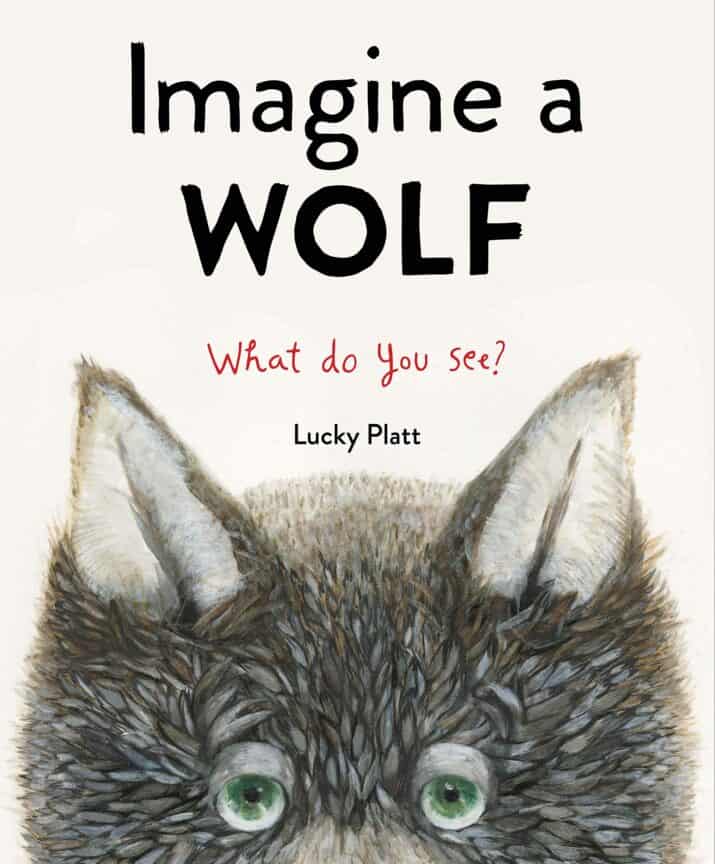
Imagine a Wolf by Lucky Platt
ages 4 – 8
I love this book that challenges our preconceived notions. In this case, of wolves. But, the valuable lesson applies to all aspects of our lives…which seems like something the whole world needs right now! First, we’re told to imagine a wolf. Then, we’re asked what we imagined…Was it the big BAD wolf? Or the wolf in this story sitting in a rocker knitting? Thought-provoking questions gently guide the reader to reexamine and question judgments and stereotypes.
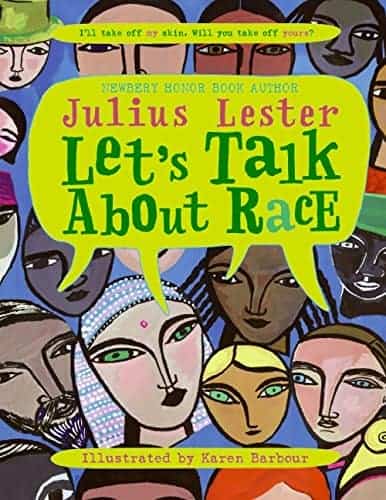
Let’s Talk About Race by Julius Lester, illustrated by Karen Barbour
#OWNVOICES
ages 4 – 8
Lester talks about how we all have a story — and race is just one of the chapters in that story. He addresses why some people think their race is better than others’. Use this book to prompt reflection and discussion.
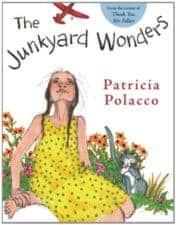
The Junkyard Wonders by Patricia Polacco
ages 6 – 12
I love this picture book about prejudice and inclusion based on the author’s real-life experience. She shows how it feels when other people judge she and her classmates for the way their neurodiverse brains work. Her class at school is called “special” or a “junkyard” class of kids. But their teacher, the amazing Mrs. Peterson, helps each child find their talent and gifts. And it makes a huge difference in their lives! (Go, teachers!)

Where Are You From? by Yamile Saied Mendez, illustrated by Jaime Kim
#OWNVOICES
ages 4 – 8
When people ask the little girl where she’s from, she’s puzzled that her reply, “here” is not accepted. She asks Abuelo because he knows everything and “like me, he looks like he doesn’t belong.” Abuelo says she’s from brave, strong gauchos, high mountains, warm, blue oceans, dark storms, sunshine,…but if she wants a place, she is “from my love, the love of all those before us…you are from all of us.” It’s a beautiful celebration of identity that I also hope will inform children (and adults) to not ask this ridiculous question because it makes people feel unwelcome, different, and other. (Instead, invite someone to play!)

Lulu the One and Only by Lynnette Mwhinney, PhD, illustrated by Jennie Poh
Lulu is a biracial girl who hates when people ask, “What are you?“ Her big brother explains that he uses a power phrase to answer that question, saying, “I’m magic made from my parents.” Lulu decides to answer with WHO she is, not WHAT she is. She says, “I’m Lulu Lovington, the one and only!” Lulu finds her power and models for readers that they can find their own power phrases, too. Her story also will help readers understand why asking judgmental questions about a person’s skin color feels hurtful.
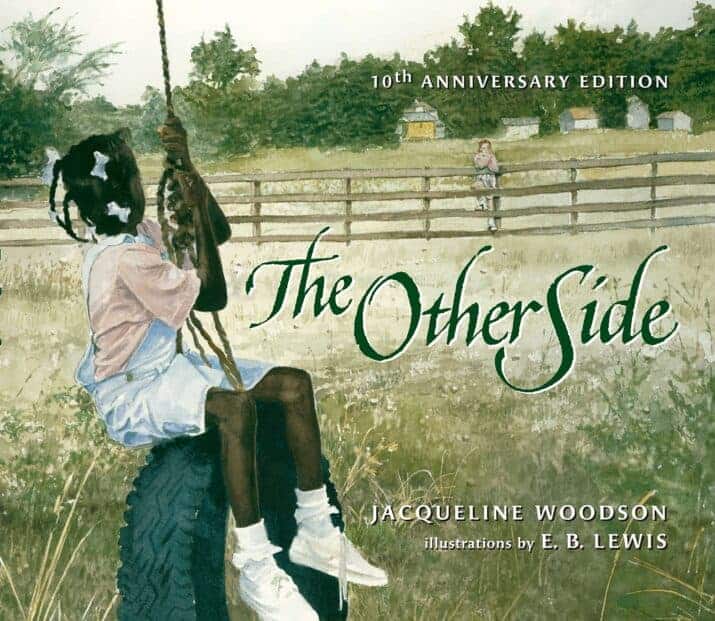
The Other Side by Jacqueline Woodson, illustrated by E.B. Lewis
#OWNVOICES
ages 4 – 12
In a story that illuminates the segregation and racism of the historical south and the power of friendship, a little girl named Clover notices a white girl on the other side of the fence. Her mom tells her not to cross the fence because it’s not safe. Despite that, and in an ending that is hopeful for the future, Clover and the white girl become friends.

Separate Is Never Equal: Sylvia Mendez & Her Family’s Fight for Desegregation by Duncan Tonatiuh
#OWNVOICES
ages 6 – 12
When the Mendez family try to enroll their children in their local California public school, they are told they couldn’t attend; that the kids had to go to the Mexican school. This injustice prompts the family to fight for integration. They’re joined both others and succeed in integrating California schools for all children. Beautifully written and illustrated, this is an important true story.
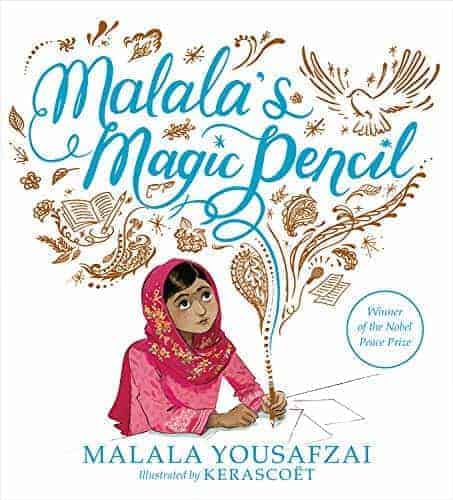
Malala’s Magic Pencil by Malala Yousafzai
#OWNVOICES
When she was younger, Malala dreamed of the things she’d do if she had a magic pencil. She’d erase war, poverty, and hunger. Then she would draw girls and boys together as equals. Soon she began writing about her beliefs. Even after bad men tried to stop her, Malala wrote, using her words as the magic to spread a message of hope. Beautifully illustrated and inspiring, this biographical story shares Malala’s ideals with the youngest of readers.
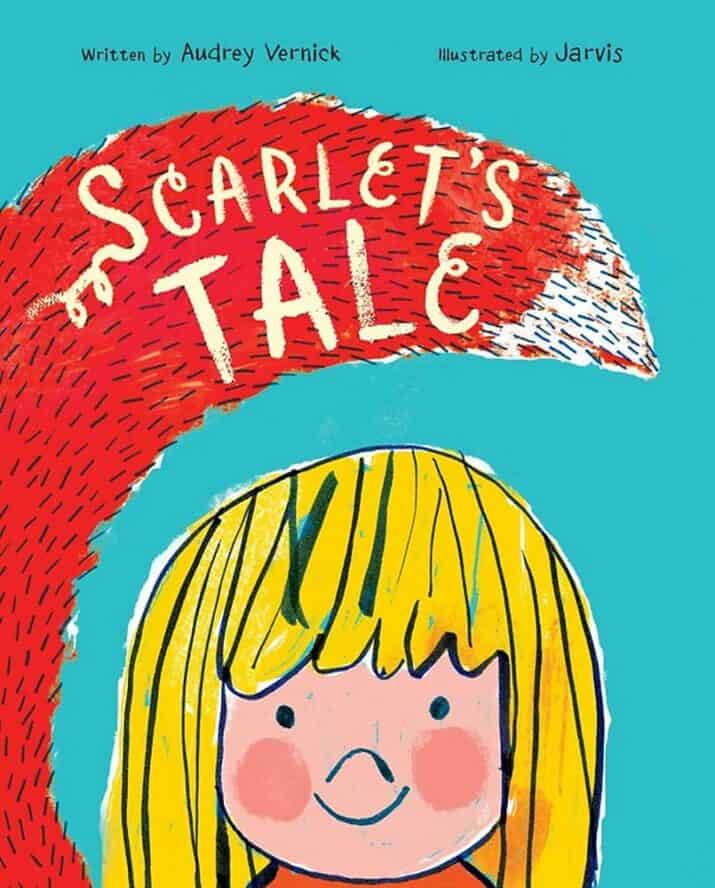
Scarlet’s Tale by Audrey Vernick, illustrated by Jarvis
Gifted storytelling! Scarlet surprises her parents when she’s born with a tail. But it’s no problem and her loving parents make sure she has a happy life and clothes with room for a tail. When she starts school, it’s a hard first day since she’s the only one with a tail but she makes friends, wagging her tail at her new friends and when she’s happy. Wagging catches on and soon everyone in her community, tail or not, is wagging. The story ends perfectly with a new baby brother who has a surprise of his own.

Don’t Touch My Hair! by Sharee Miller
ages 4 – 8
Aria loves her hair but doesn’t love when people touch it. She hides in all sorts of fantastical places — a castle, outer space, underwater. Soon, Aria gets lonely and goes home. The next time someone touches her hair, she says, “Don’t touch my hair.” When people ask, Aria feels comfortable saying either no or yes. What a beautiful book to help children learn about respectful boundaries.
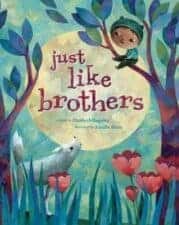
Just Like Brothers by Elizabeth Baguley, illustrated by Aurelie Blanz
ages 4 – 8
Lush illustrations and lyrical text tell the redemptive story of two different creatures who come together in friendship despite warnings from their parents. Because sometimes people judge when someone is different. Neither boy nor cub pay too much attention though. They’re too busy chasing rabbits.
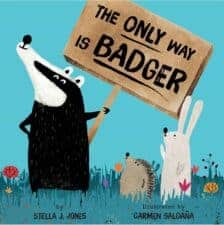
The Only Way Is Badger by Stella J. Jones, illustrated by Carmen Saldana
ages 4 – 8
This allegorical story shows what happens when one person elevates himself above others –to the degree that others are unwelcome, excluded, and treated differently. “Badgers are best.” That’s what Badger tells the other animals. He’s so confident that the other animals think maybe he is right. Badger even makes a list of how to be more like him. For example, to be the best you must be able to dig. Which Deer can’t do because of his hooves. So Badger chants, “No deer here” and kicks Deer out. Then when Bear and Moose can’t fit into a burrow, they’re also kicked out of the forest. One animal after the other is excluded. Pretty soon, Badger realizes aren’t best he misses his friends. I think the ending is unrealistic because we can’t expect that the world’s Badgers will spontaneously realize their mean ways and apologize.
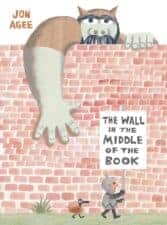
The Wall in the Middle of the Book by Jon Agee
ages 4 – 8
The knight tells readers that he’s glad there is a wall in the middle of the book because of the Ogre on the other side. Children will notice in the illustrations that the soldier is not as safe as he thinks– and that the danger isn’t from Ogre. When a crocodile tries to eat the soldier, the “scary” Ogre from the other side saves the soldier’s life. The lesson? What we think is scary (the unknown or different) ends up not being scary at all.
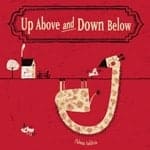
Up Above and Down Below by Paloma Valdivia
age 4 – 8
A thin red line separates the up above people and down below people — we can think of it like the equator or a metaphor for people who are yet unknown to us. Up on top and down below, the people live the same except in a few small ways. “If it’s planting time up above, it’s harvest time down below.” I like this picture book’s simple message about not judging others.
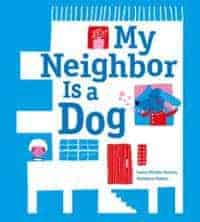
My Neighbor Is a Dog by Isabel Minhos Martins and Madalena Matoso
ages 4 – 8
Prejudice lives in our world but when we see it in our own parents, it’s really difficult. In this picture book, new neighbors move in; neighbors that the little girl really likes but her parents don’t because they’re different. So her family moves away. The little girl looks forward to coming back without her parents one day. It’s unusual to read a book where the parents aren’t kind and in fact, prejudiced. The story shows how the little girl accepted the reality of her family but still hopes for a difference in the future.
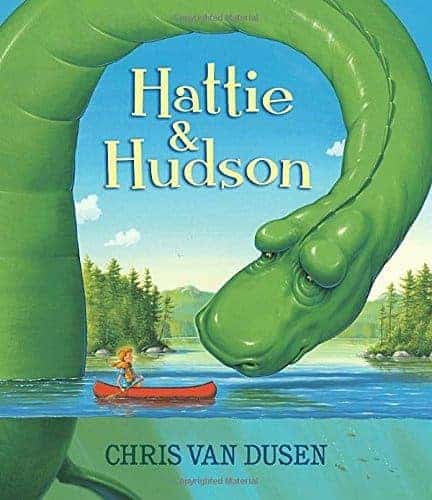
Hattie & Hudson by Chris Van Dusen
ages 4 – 8
Hattie’s sweet singing draws a large green “monster” reminiscent of the Loch Ness Monster out of the lake’s depths. The two become good friends. Unfortunately, the lake’s other residents are terrified of the supposedly dangerous monster who Hattie has named Hudson. Hudson comes up with a brilliant idea to show the townspeople what they can’t yet see — his kind heart. I don’t like that it’s up to Hudson to prove the intolerant people wrong because it is NOT the job of an oppressed person to teach others how to be anti-racist.
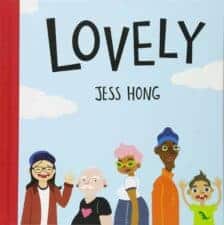
Lovely by Jess Hong
all ages
Striking illustrations show “lovely” people who are different, short, tall, simple, complex, fluffy, sleek, and more. Use this book to teach adjectives, opposites, and appreciation for diversity.

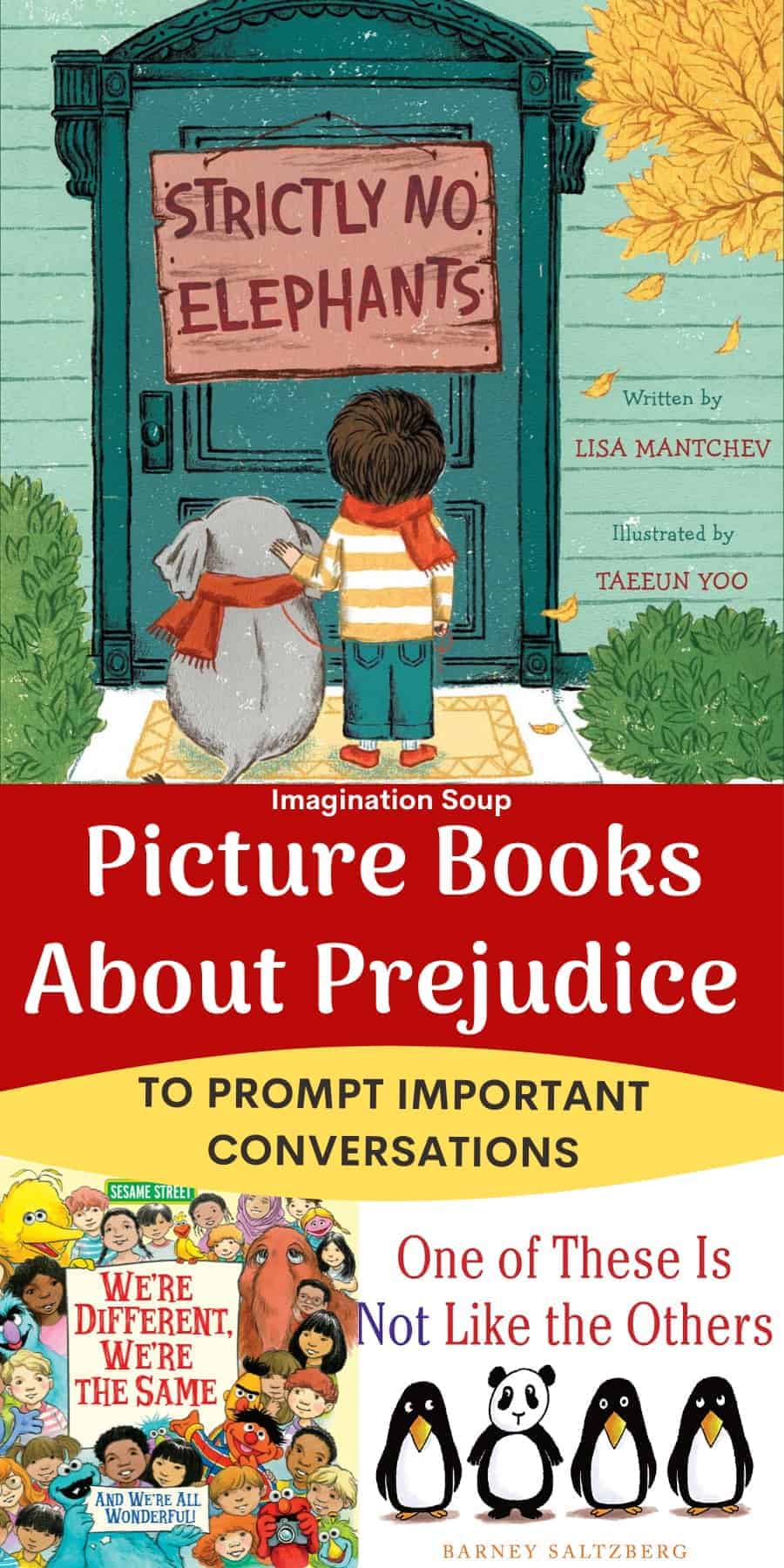
You Might Also Like:
Children’s Books About Immigration and Refugees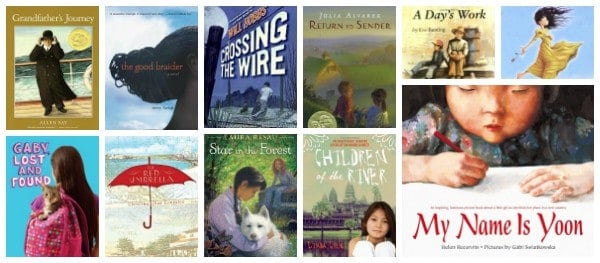
Anti-Racist Middle Grade Book List for Ages 8 – 12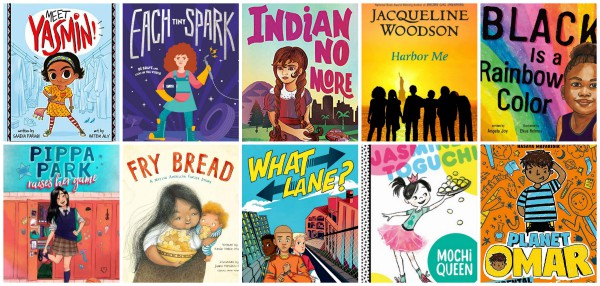

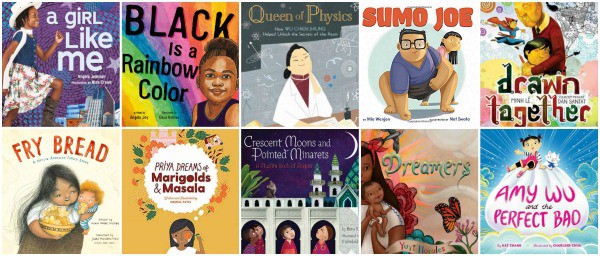
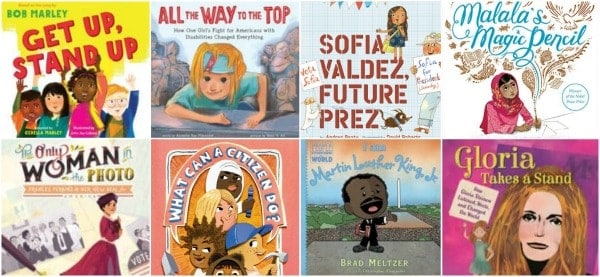
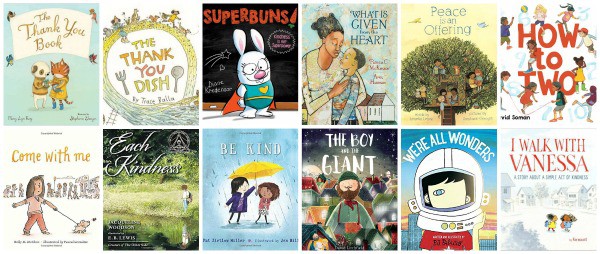
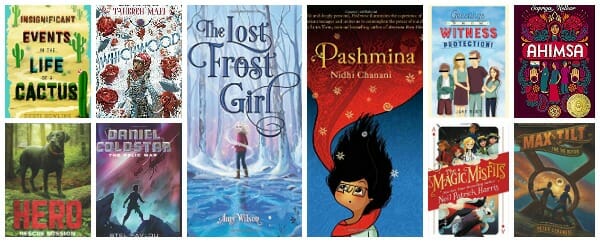

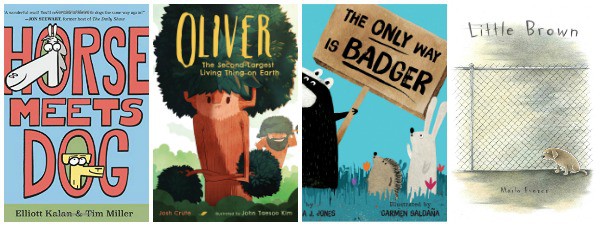
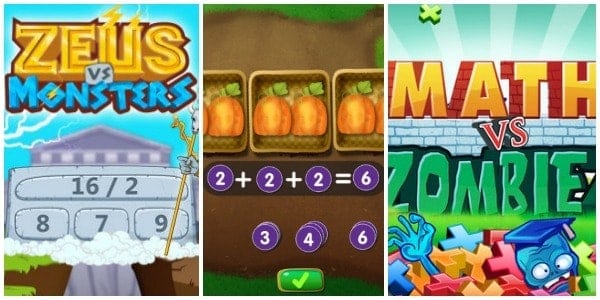
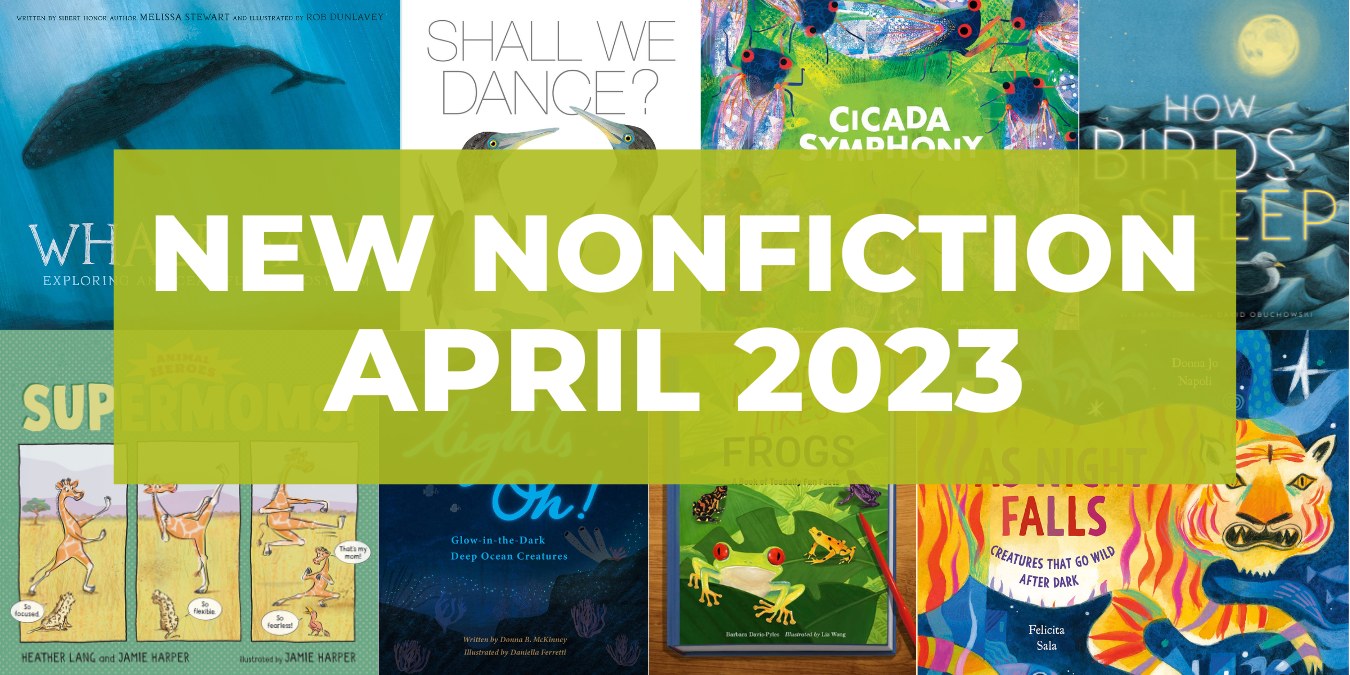
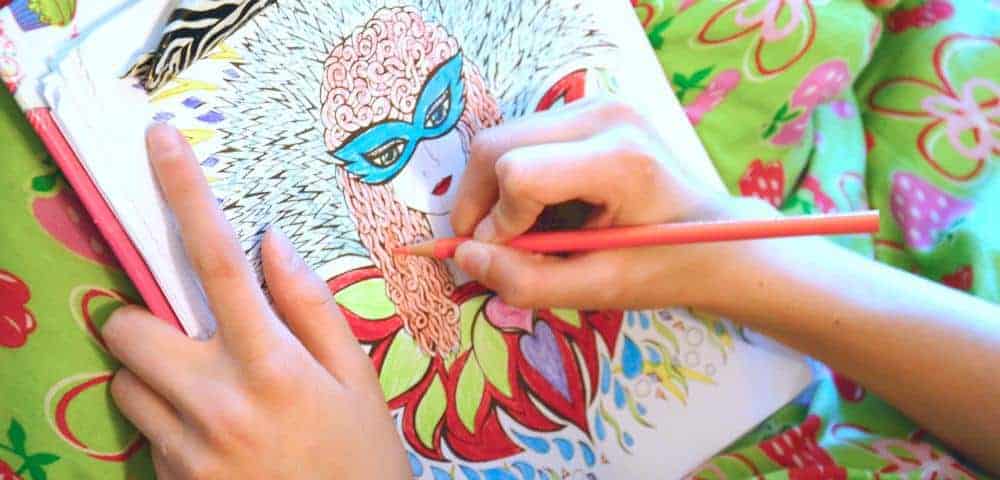
Hi Melissa!
Your work is such an inspiration! I appreciate your wisdom and the depth/breadth in resources! I may have missed this in your list but here’s another idea:
AntiRacist Baby by Ibram X. Kendi
[I know elsewhere you’ve mentioned Ibram X. Kendi’s work How to Be an AntiRacist and Stamped From the Beginning/Stamped with Jason Reynolds]
Love and Gratitude!
Thank you! I need to add that. 🙂
This is a wonderful list of books I haven’t heard of before. Another suggestion for middle grade readers is No One Needed to Know. It is about a girl learning the difficulties and responsibilities of having an older autistic brother and helping others understand and accept him.
thanks, Donna, I’ll check it out. 🙂
thanks — I’ll look for that book.
Have you seen my other book recommendations that have characters with autism? https://imaginationsoup.net/books-kids-characters-autism-spectrum/
Great article! I love that you included the book Mixed by Arree Chung. I have used it with my preschool class and they adored it and really got into the story. Arree is a gem. He is the founder and primary instructor of Storyteller Academy where he teaches picture book writing and illustration. Great classes and community of like minded people.
Finally, there is an error in the hyperlink calling the book colors. It is called Mixed.
Best to you!
thank you, Maria! You’re hired as my editor. 🙂
Great suggestions! Prejudice is learned, not inherently present. I remember my biological father telling “nigger” jokes. As a 5yr old, I “knew” that they were supposed to be funny, but didn’t understand why. Thank heavens my mom taught me better, and I can show my kids that we are ALL Gods children. God loves variety, and how much better our world is with it.
thanks for sharing. 🙂
What a fantastic post, it is so worrying to see the current rise in prejudice. I know as teachers and parents we can do a lot to create a positive atmosphere to celebrate difference and to encourage children and young people to also challenge prejudice as they notice it when they are growing up. Thank you for the list, these suggestions are great. For slightly older children Horton Hears a Who by Dr Seuss is also a great one my son and I loved to read together.
Thanks for suggesting it! I debated about adding this title because of the recent revelations about Dr. Seuss’s prejudices. However, it is a really good book.